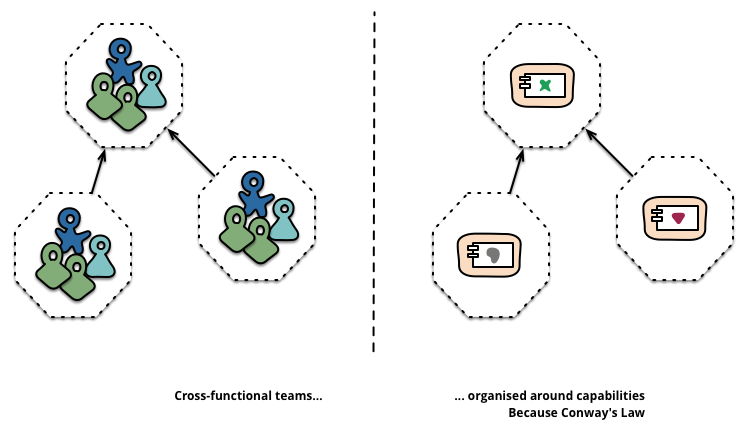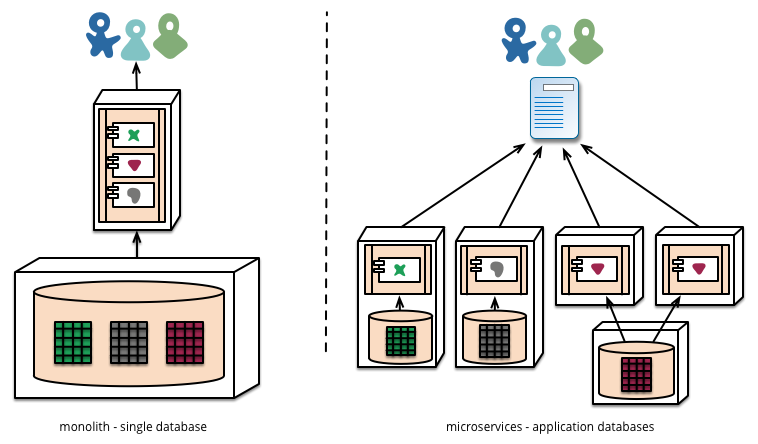Boundaries
Boundaries in microservices, as Martin Fowler describes, are organized around business capabilities:
The microservice approach to division is different, splitting up into services organized around business capability.
Such services take a broad-stack implementation of software for that business area, including user-interface, persistant storage, and any external collaborations. Consequently the teams are cross-functional, including the full range of skills required for the development: user-experience, database, and project management.
|
|
|
|
Given a small set of microservices, everyone on the team managing those microservices is closer to the whole functionality a service provides, and become a cross functional team; because they are able to understand the whole service from end to end.
And ultimately, how both look, when put side by side:
|
|
|
|
On the previous diagram is clear how in general terms, a monolith uses a single database, whereas a set of microservices use their own storage, reponsibility of different teams, and how a microservice can at any moment in time be formed by one or more instances, depending on the load, and on the decisions taken by the administrators and/or the orchestrator.

